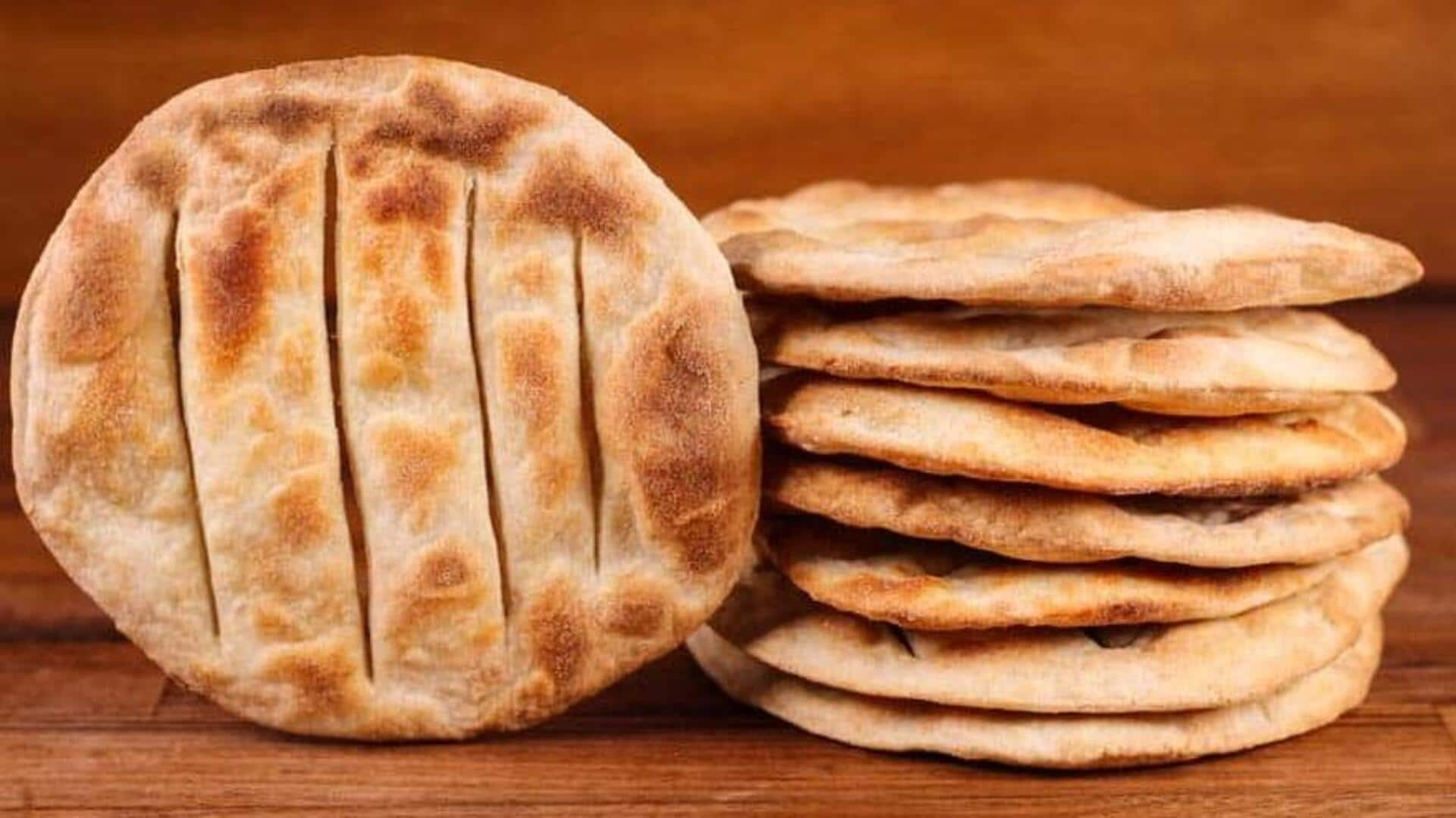
Exploring historical and cultural significance of bakarkhani, a traditional bread
What's the story
Bakarkhani, a traditional bread from the Indian subcontinent, specifically Bangladesh, India, and Pakistan, holds a deep-rooted history tracing back to the Mughal era. This article provides a comprehensive exploration of the historical and cultural significance of bakarkhani, examining its origins, variations, preparation techniques, and its place in different cultural settings.
Origins
A glimpse into bakarkhani's origins
Bakarkhani is named after Aga Bakar Khan, a general in Nawab Siraj-ud-Daulah's army. This bread originated in the 18th century in Dhaka, Bangladesh. It was initially a royal delicacy prepared for the aristocratic families, but it eventually gained popularity among the common people. This layered flatbread has now become a staple in South Asian cuisine.
Variations
Variations across regions
Although the term bakarkhani generally refers to a sweetened bread made with ghee (clarified butter), its variations extend across different regions. In Bangladesh, it is typically sweet and flaky, often served during special occasions such as Eid and weddings. In contrast, Kashmir (India) version adopts a more savory approach, incorporating spices and nuts into the dough. Each version mirrors the unique preferences and culinary practices of its region.
Preparation
The art of making bakarkhani
The process of making bakarkhani is complex and beautiful. The dough is kneaded and layered with ghee or oil, and sugar or molasses and cardamom are added for flavor. It is then rolled out very thin and baked in a clay oven or tandoor, resulting in a crispy exterior and soft interior. This labor-intensive process highlights the traditional craftsmanship of this bread.
Significance
Cultural significance and modern adaptations
Bakarkhani is not just a bread; it's a cherished tradition. It holds a place of honor in South Asian weddings and festivals, symbolizing hospitality and warmth. Chefs have also modernized it with a twist of creativity - think chocolate-filled bakarkhani for the sweet-toothed, fruity versions for a refreshing change, or even gluten-free options for the health-conscious. All the while, they've managed to keep its traditional soul alive.
Tips
Tips for enjoying authentic bakarkhani at home
To savor the true essence of bakarkhani at home, make sure to use fresh ghee to achieve that distinct flavor. Take your time in layering during preparation - it's a labor of love! Feel free to get creative with different fillings and enjoy it with a cup of tea. It makes for a great snack or dessert.